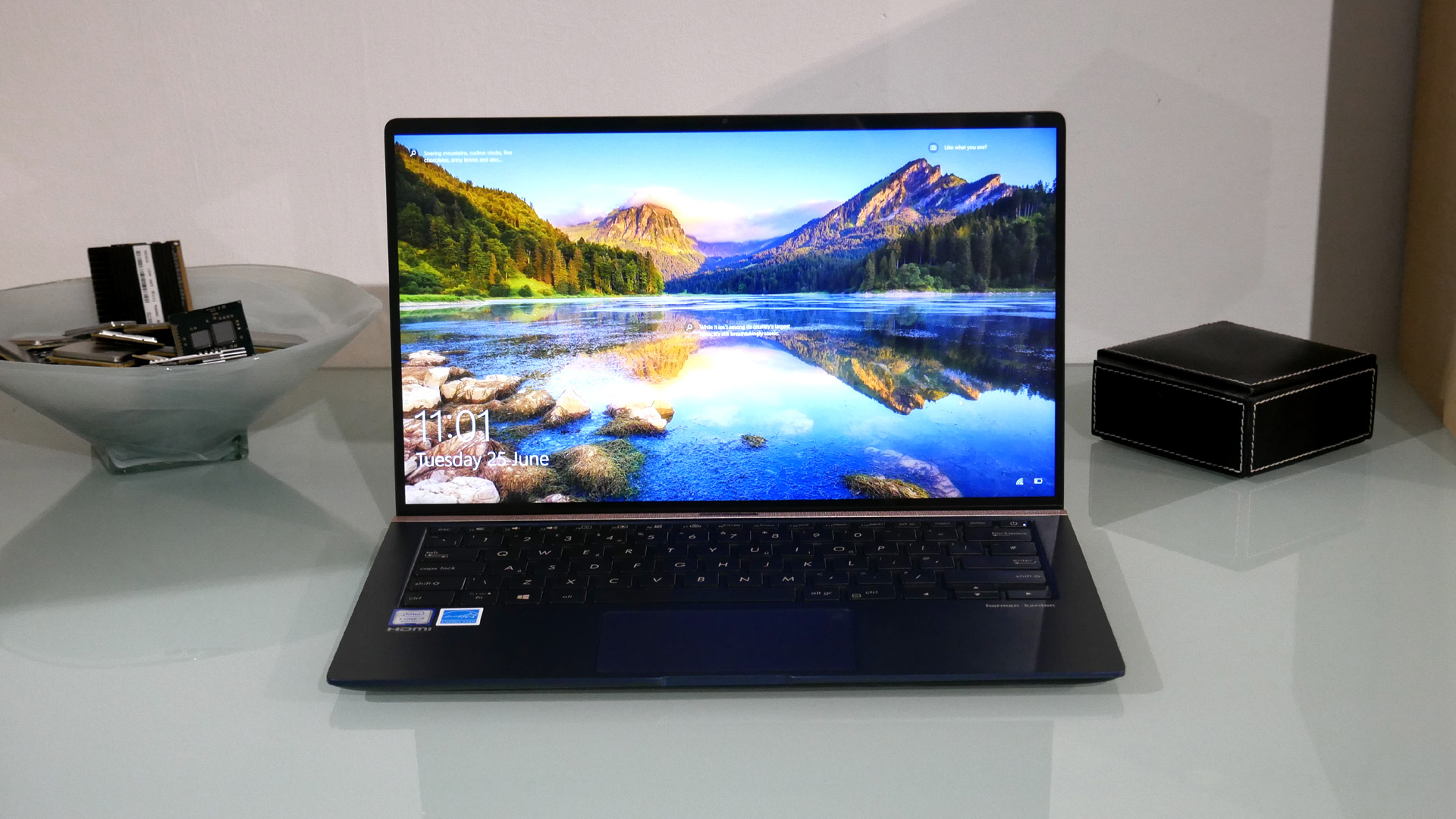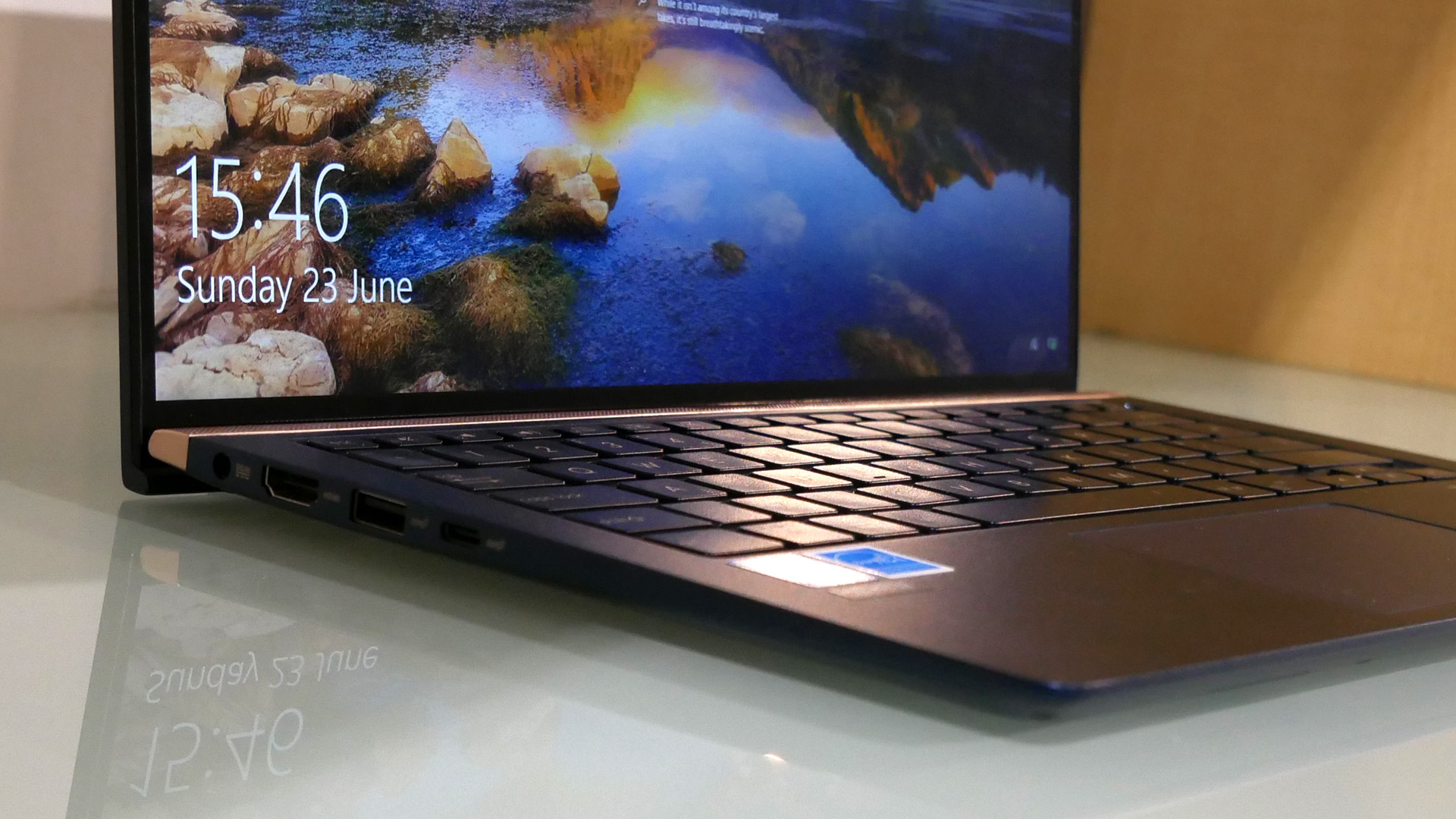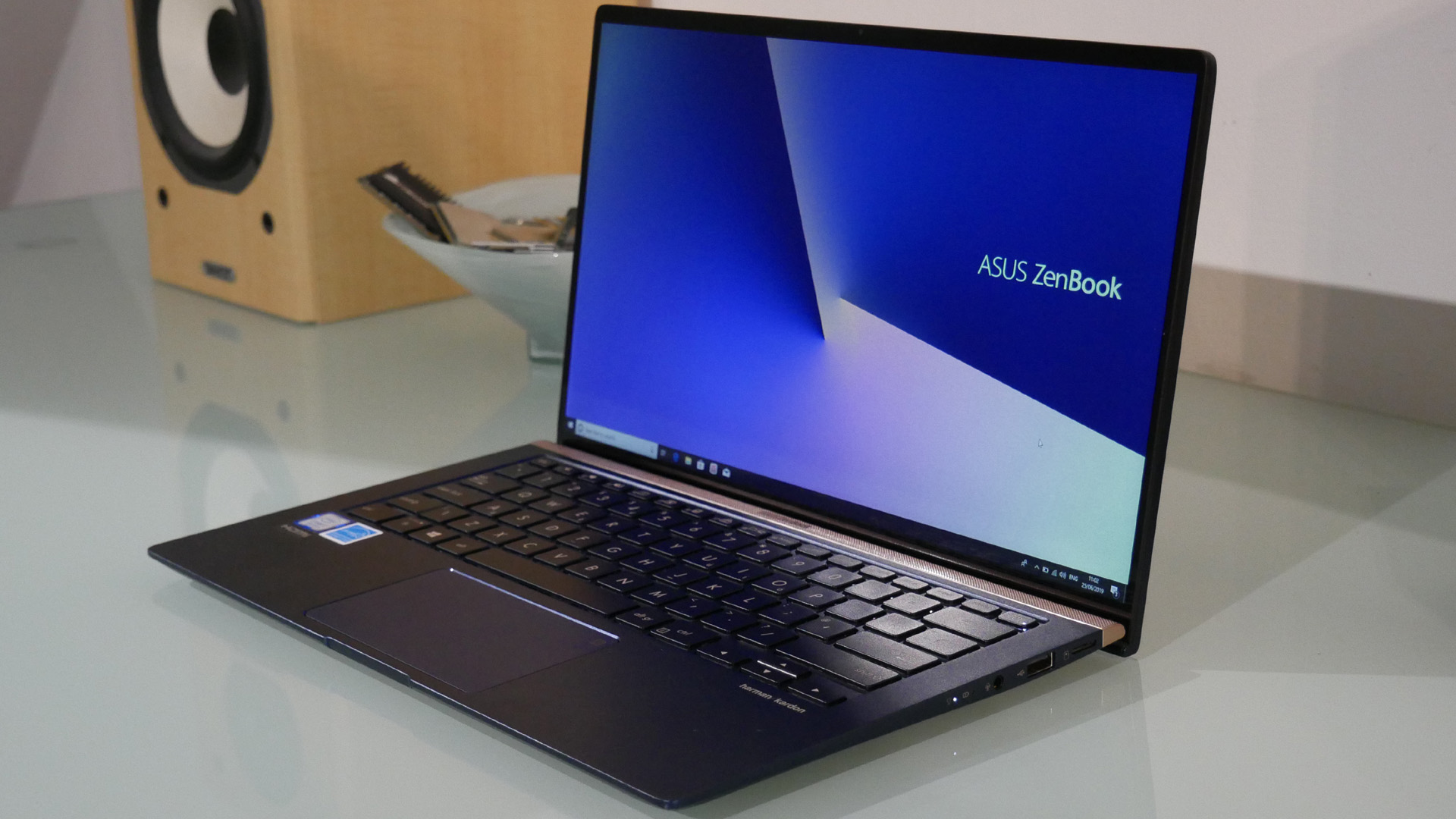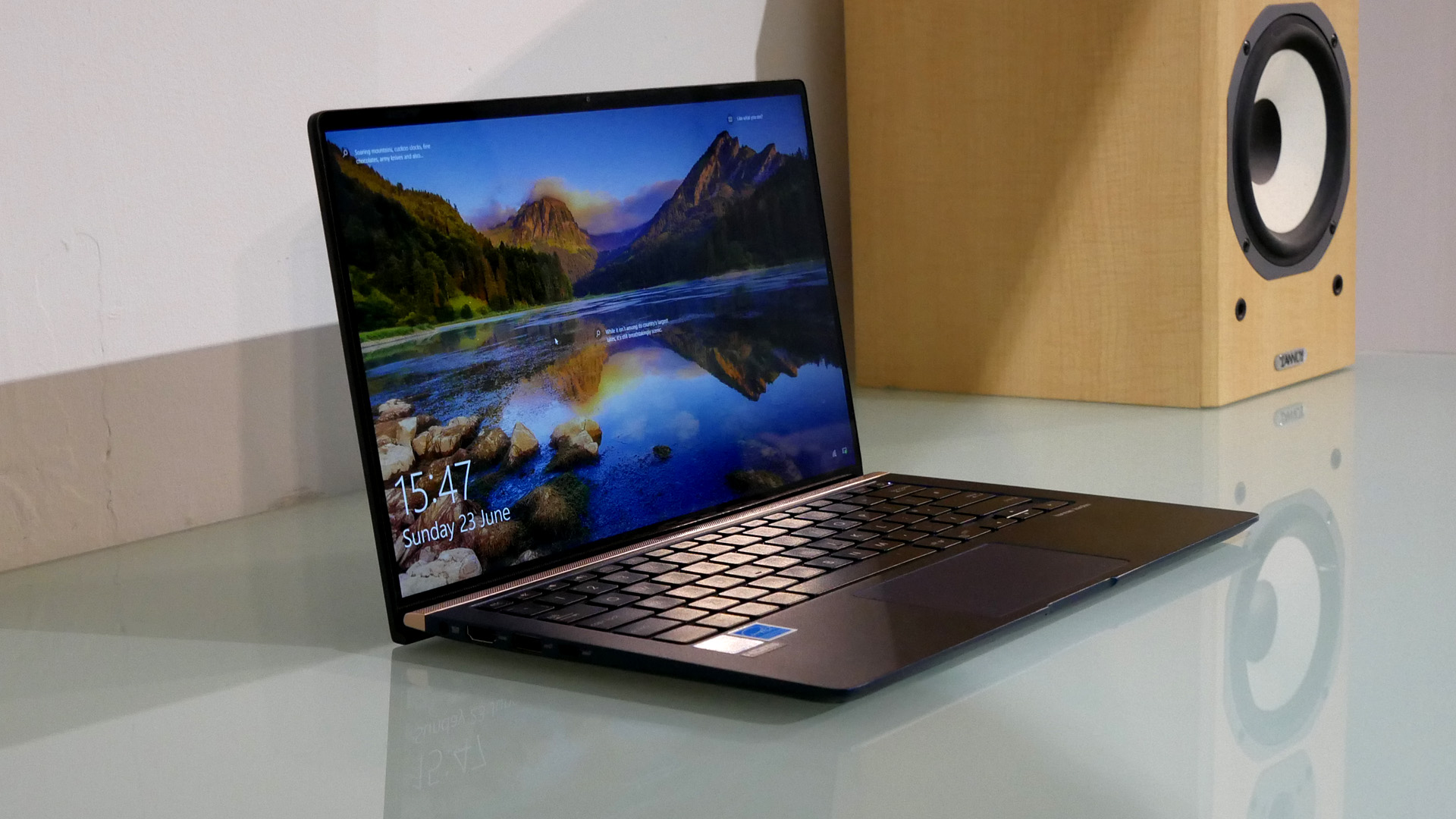Why you can trust TechRadar
Here's how the Asus Zenbook 14 UX433F performed in our suite of benchmark tests:
3DMark: Sky Diver: 4,676; Fire Strike: 1,173; Time Spy: 450
Cinebench CPU: 671 points; Graphics: 59 fps
GeekBench: 5,063 (single-core); 14,594 (multi-core)
PCMark 8 (Home Test): 2,991 points
Battery Life (TechRadar movie test): 12 hours and 19 minutes
If the Asus Zenbook 14 UX433F is all about that screen, it’s a pity it isn’t slightly more impressive beyond those headline grabbing minimal bezels. However, it’s not a dud of an LCD panel, to be sure.
The IPS technology makes for decent viewing angles and good colors. But the brightness is merely adequate and the same goes for the 1,920 by 1,080 native resolution. For smartphone-rivalling detail and font sharpness, in other words, look elsewhere.
The performance of the other core components is more impressive. The Intel Core i7-8565U quad-core CPU will be plenty for all but the most demanding mobile workflows. Ditto the Intel 512GB NVMe SSD, which delivers desktop class storage performance.

If there are exceptions to all that, they involve the graphics subsystem and the mere 8GB of RAM. The former is no surprise for an Ultrabook, just be aware that like any current laptop that utilises Intel’s integrated graphics, it’ll be pretty useless for al but the least demanding games.
The impact 8GB system memory limitation is less clear cut. Much will depend on your typical usage. If you’re in the habit of running zillions of browser tabs in parallel while also dipping into a spot of serious content creation at the same time, you’ll risk running but of memory and falling back on the dreaded disk swapping.
It’s also worth noting that the Zenbook 14 has a tendency to run a little hot under moderate loads and spin up it fans earlier than you might expect.
As for those Harmon Kardon speakers, they crank out decent outright volume levels. But the soundstage is pretty thin. Admittedly, there’s only so much that can be achieved with such a small form factor. But others still do it a fair bit better, notably Apple.
We’re also not that keen on the suite of pre-installed Asus apps and tools. As configured, it quickly pesters you to reboot for Asus updates, only offering an option to postpone and no way of disabling the feature without going through a lengthy registration process that also demands access to personal files and information. An easier opt out would be preferable.

Battery life
More of an unambiguous win is the Asus Zenbook 14 UX433F’s battery life. Managing 12 hours and 19 minutes in our movie playback test is good by any standard and gives you option of leaving the charger behind when you head out for the day.
That said, the lack of USB-C charging means you won’t be able to pinch a bit of generic charging power if you do end up running low.

Verdict
All-screen phones are already thing. Now it’s the turn of laptops to maximise screen-to-body ratio. Once you’ve experienced the new Asus Zenbook 14 UX433F, it certainly makes conventional portables look a bit past it, even those with slim bezels on three out of four sides of the display.
The Zenbook 14 is also pretty well priced for a 14-inch Ultrabook and offers good if predictable all-round performance. But it’s not quite a market-conquering killer of a laptop. Why not? While the chassis is well engineered, it’s also a little generic, bar the copper-colored venting at the rear.
The port selection and conventional charging connector also make the Zenbook feel a little old hat. Today a since USB-C socket is probably fine. A year or two from now, you may wish you had more, not to mention the ability to improvise with USB-C charging.
For all its slim-bezel goodness, the Zenbook’s screen is also merely OK. It’s not the highlight it would have been with a punchier, higher resolution panel. All of which makes the Asus Zenbook 14 UX433F a solid choice worthy of your shortlist but not necessarily a no brainer.
Image credits: TechRadar
- Check out our Asus coupon codes for the latest savings and deals.
Technology and cars. Increasingly the twain shall meet. Which is handy, because Jeremy (Twitter) is addicted to both. Long-time tech journalist, former editor of iCar magazine and incumbent car guru for T3 magazine, Jeremy reckons in-car technology is about to go thermonuclear. No, not exploding cars. That would be silly. And dangerous. But rather an explosive period of unprecedented innovation. Enjoy the ride.
